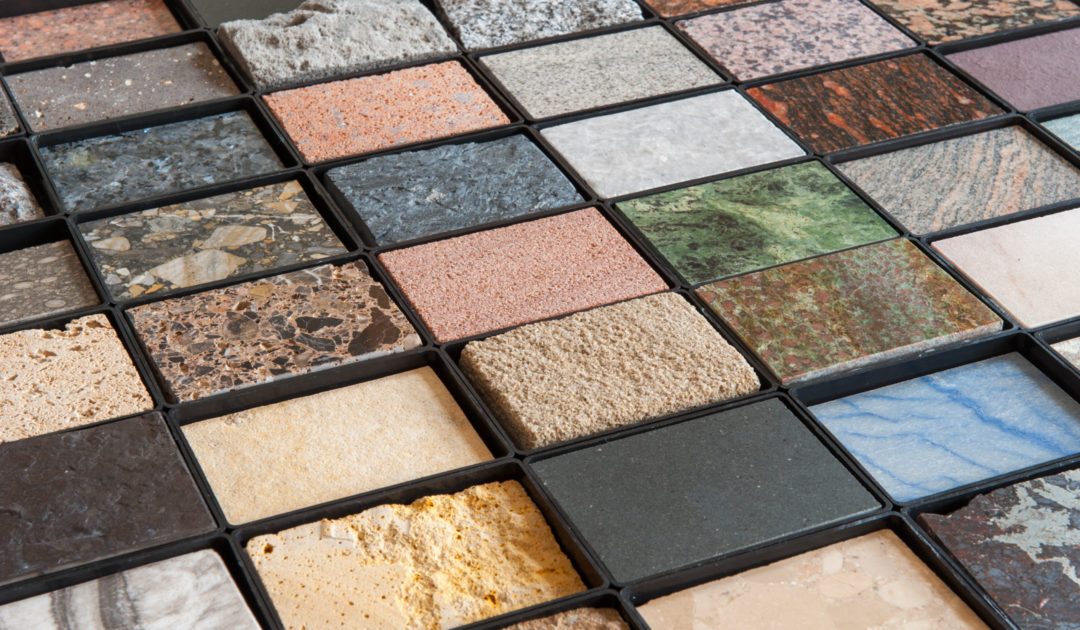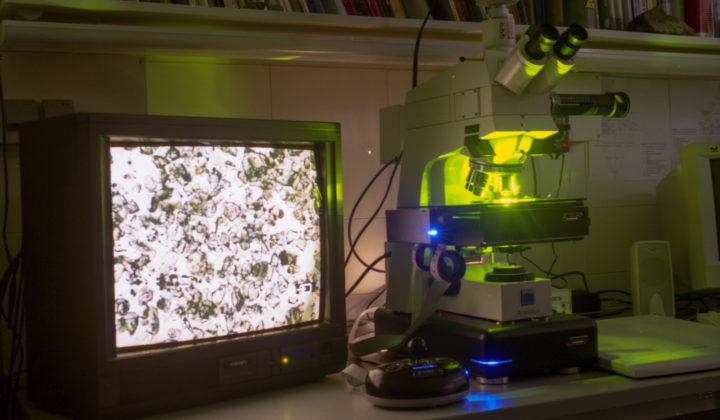
Collection of Saxonian rocks
The collection of Saxonian rocks is _mce_one of the most important regional geological collections in Saxony and currently contains over 10,000 catalogued hand-size and larger samples, representing a large completeness of all rock units occurring within the state. Furthermore, there are another ca. 10,000 units, particularly from old stock, which could not be technically registered in the collection so far. Many of these rocks come from outcrops which no longer exist and thus, are unique reference samples. The collection features an extensive evidence of famous Saxonian rocks such as the Serpentinite of Zöblitz or the pebble gneiss of Obermittweida. Additionally, numerous historic hand samples of the 18th and 19th century with original labels handwritten by important geoscientists such as Johann Heinrich Gottlieb Gössel (1780–1846), Friedrich Albert Fallou (1794–1877), Hanns Bruno Geinitz (1814–1900), Ernst Kalkowsky (1851–1938) and Karl Hermann Scheumann (1881–1964) are archived. Moreover, this collection includes so-called depth samples from different Saxonian coal shafts from the mid-19th century and the former company collection of the shaft “Willi Agatz” in Freital can be found.
Collection of non-Saxonian rocks
The collection comprises more than 15,000 non-Saxonian rock samples from Europe, Asia, America, Africa and Antarctica. This allows scientific questions to be answered from rock samples from all over the world within a short time. Besides numerous reference samples from Germany and the neighboring countries, around 1,000 rocks from Scandinavia are mentioned, serving as reference material for research on the determination of glacial boulders and pebbles. The collection of over 3,000 South American rocks should also be highlighted, which were found during research expeditions of the two geologists Alphons Stübel (1835–1904) and Wilhelm Reiss (1838–1908) that collected from 1868 to 1877 in the Andean region.
Collection of building and decoration stones
The collection of building and decoration stones consists almost exclusively of ground and polished stone slabs, which are for decorative purposes and sculptors use. The importance of this part of the collections lies particularly in its reference function for restoration and architectural issues. In the building and decoration stone collection, historical and presently used rock types are archived in an extent that is only shown at few collections in Germany. It currently comprises about 3,350 stone slabs from a total of 75 states. About 1,500 of these rock samples come from German natural stone quarries. Secondarily, also plaster and mortar samples of historical buildings are preserved in the collection. The oldest specimens, over 160 rock tablets, are already listed in the “Katalog der Königlich Saechsischen mineralogischen Sammlungen in Dresden “(1832–1846) by the gallery clerk and later inspector Johann Heinrich Gottlieb Gössel (1780–1846). Partially, they come from a time before 1819.
Further collection areas
Further special sections within the petrographic collection are the fluvial and glacial boulders and pebbles and the impact rocks collections as well as other collections such as the petrographic thin sections collection and the teaching and training collection.
Among the most impressive show pieces of the collection are not only the flash tube of Guteborn and the large thin section slices but also includes the large polished slabs of marble of Maxen in the Elbtalschiefergebirge, Saxony, a metaconglomerate of Obermittweida in the Erzgebirge, Saxony, an eclogite of Silberbach in the Fichtelgebirge, Bavaria, a dumortierite quarzite of Macaúbas, Bahia, Brazil, a coloured sandstone and a rhyolite, both of Kenab, Utah, USA and several orbiculites (orbicular diorites and orbicular gabbros) of Toivakka Länsi-Suomen lääni, Finnland. Noteworthy are an opal conglomerate of Koroit, Queensland, Australia and the vitrified pumices of Echo Mountain, California, USA, too. More rarities are represented by a luxulianite of Luxulyan, Cornwall, Great Britain, the historical slabs of so-called ruin marble from around Siena, Toscana, Italy and various vessels of serpentinite of the 18th and 19th century.





